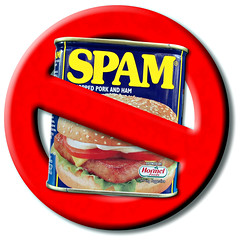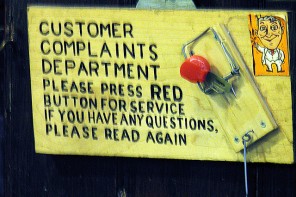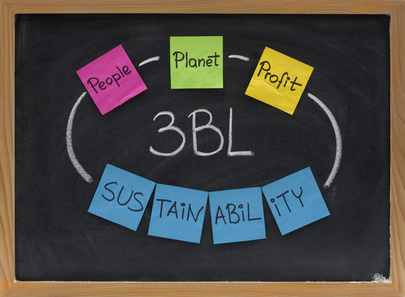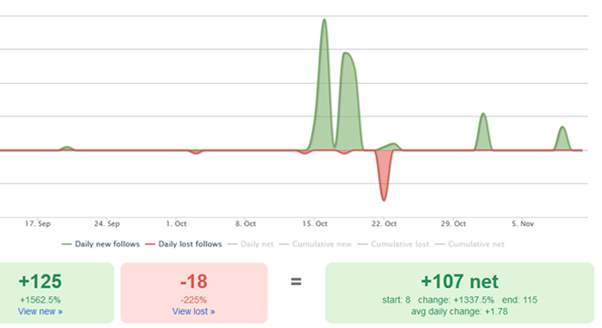In my social media etiquette handbook, which is easily my most referenced post of the past year, I allude to a problem that has become increasingly more prominent in social media circles and on social media networks and sites. In the post, I shared my don’ts of social networks, and to that point, I added the following rule for LinkedIn:
Gathering all the email addresses of users you are connected to — even locating email addresses of LinkedIn Group managers — and utilizing this mailing list to promote your own company or service off-site. In a specific case, I manage a few LinkedIn groups so my email address is far more visible on the site than I’d like. I’m not connected to the LinkedIn individual who spammed me, but he still took the liberty to use my email address for his personal gain in a completely unsolicited fashion. Perhaps this individual lost sight that LinkedIn is a professional network and not a spam facilitator. Even so, recipients should still be required to opt in.
 With regards to LinkedIn, their legal team and customer support staff must have anticipated the demand too, as there is a clause in its user agreement prohibiting this behavior (see #11, “DO NOT … upload, post, email, transmit or otherwise make available or initiate any content that … includes any unsolicited or unauthorized advertising, promotional materials, “junk mail,” “spam,” “chain letters,” “pyramid schemes,” or any other form of solicitation.”)
With regards to LinkedIn, their legal team and customer support staff must have anticipated the demand too, as there is a clause in its user agreement prohibiting this behavior (see #11, “DO NOT … upload, post, email, transmit or otherwise make available or initiate any content that … includes any unsolicited or unauthorized advertising, promotional materials, “junk mail,” “spam,” “chain letters,” “pyramid schemes,” or any other form of solicitation.”)
The social media etiquette article, which was written in December 2008, is still quite relevant. In fact, the problem is expanding to all corners of the social media world. The problem that I’m experiencing more often, and one that my colleagues are beginning to see more frequently, is that an opt-in for a relationship or connection online does not actually grant permission to market. In other words, if I connect with you on LinkedIn, I didn’t invite you to send me spam. If I know you face to face, that doesn’t authorize me to throw my story pitch in your face. If I’ve been to your house once before, that doesn’t authorize me to slide promotional flyers under your door. If I’ve spoken to you on the phone, that doesn’t authorize me to play telemarketer and get you to sign up for my program.
Why do people think it’s appropriate for the same kinds of behavior, which are shunned in real life, to occur online? Wouldn’t it be safer, for the sake of maintaining the integrity of your business name or your personal brand, to ask permission first? Why should you do now, apologize later? By crossing the line, you’ve already violated someone’s trust. What makes you think they’ll be receptive to your apology and open to forgiveness?
Know an “Expert” from a Con-Man
There are a lot of ethical social media enthusiasts in my midst. They understand that the boundaries of the “human world” have not disappeared in the virtual world. They understand that you still need to build trust first, and explicit opt-ins for communication is absolutely mandatory. They understand that if you say you’re not interested that it’s not a good idea to pursue it further. Chance are if you’re reading this, you’re one of these people. Hopefully.
But while you’re likely part of the small group of professionals who understand that the rules of engagement do not change when we cross over to the virtual world, there’s an ocean of people who easily think that access to an email address or a “send message” form is an opportunity. They see dollar signs. “Maybe I can sell the product to her,” they think. Maybe I can hump his leg and get him to understand my new service! After all, he’s just so nice online and he clearly comes off as approachable.
Approachability is Not an Invitation
There are some people who are incredibly approachable. That’s because they actually show they care. Truth be told, perhaps they do. However, there are still boundaries that should never be crossed, no matter how approachable someone seems. (Of course, if you know them and can actually have lengthy conversations with the person day after day, that obviously means your relationship has made it to the next level.) But in general, there is no implicit invitation. Just because I choose to reach out to you, comment on your blog post, follow you on Twitter, become your Facebook friend, or join your LinkedIn group, it was a desire for me to possibly get to know you in the future. After all, most of these relationships, for some, are open doors into future opportunities to collaborate and to get to know each other, to build a network that is clearly social.
Did You Think Before You Sent That?
 This kind of outreach is often done without regard for consequence. I have the ability, if I so choose, to call you out on this behavior. And then it’s not an issue of apologizing to me; you’ll publicly have to apologize to everyone who I’ve shared my dismay with. And those people have the potential to share it with their followers. Your small one-on-many-without-any-care-in-the-world messaging is now a public relations issue that you brought upon yourself because it was too much work for you to actually get permission to contact someone.
This kind of outreach is often done without regard for consequence. I have the ability, if I so choose, to call you out on this behavior. And then it’s not an issue of apologizing to me; you’ll publicly have to apologize to everyone who I’ve shared my dismay with. And those people have the potential to share it with their followers. Your small one-on-many-without-any-care-in-the-world messaging is now a public relations issue that you brought upon yourself because it was too much work for you to actually get permission to contact someone.
Relationships Matter, Online or Offline
Every social media interaction you have with someone is part of a bigger picture: a relationship. And in real life, these relationships would get burned as quickly as that match that you just lit. Worse yet, there’s a lot less trust when real expressions are lacking and the one thing you have in the way of making relationships seem real is a monitor. Despite this, people lose sight of the fact that monitors (and a little bit of technology) are the only things that are really getting in the way of a real face-to-face relationship, one that you’d probably value more if it weren’t for that obstacle.
With relationships comes responsibility. Your responsibility as a marketer is to understand that permission marketing might actually take work, but the other extreme is to choose an easy way out that will likely have a cost that may be hard (or impossible) to recover from. What do you choose?





Wow. I did not realize that people were scraping LinkedIn lists. I rarely visit LinkedIn, as I am too busy elsewhere, and I guess I am glad. Although, I suppose people could do the same on Twitter where I am more visible. But that is neither here nor there, because as you say, that is not a relationship; that is spam.
LinkedIn gives you email addresses; Twitter is different in the sense that the email addresses are not visible. The former is a bit more evil than the latter 🙂
Great Post,
I am one of the few social media enthusiast you speak about and it is so frustrating trying to weed out people with a genuine interest that matches your own, from all of the “Make yourself rich,” “Work from Home,” and my personal favourite, “we can get you in the top 10 of Google!” types.
I persevere however and it sometimes pays off when I’m referred to blogs such as this, I look forward to following you!
I love, “approachability is not an invitation.”
I have long taken the Robert Scoble approach and published my email and phone number. It is amazing how many will abuse the email, but don’t have the guts to call you on the phone. My phone usually only rings with legitimate business or kindness.
Great post! I hope lots of folks read it. Unfortunately, most spammers are probably too lazy to read 🙂
This is a GREAT post! I have experienced this spam, often from vendors from vendor shows I have participated in, who have taken the email address from an email communication that was sent by the show coordinator to all participants. Suddenly I am receiving news from vendors I’ve never met, face to face, much less approved communication from.
I hope business owners from all walks of life read this and take heed. Spam is still spam, even dressed up and made pretty.
I have a big question. We have a 2000 relationship built opt-out list. How do we move to an opt-in or double opt-in list? I’d have to either 1) start over and ignore those 2000 (about 35-40% open rate) or 2) send them another email to get them to opt-in and start from there. What is the best tactic to be truly spam free?
Janie, I’m not entirely sure – I think it really depends on email marketing tools. Perhaps someone here can provide further insights.
My focus is more on the humanness of the business versus the tools of the trade. The tools help, but at the end of the day, it’s about the relationships. Hopefully someone can shed some light.